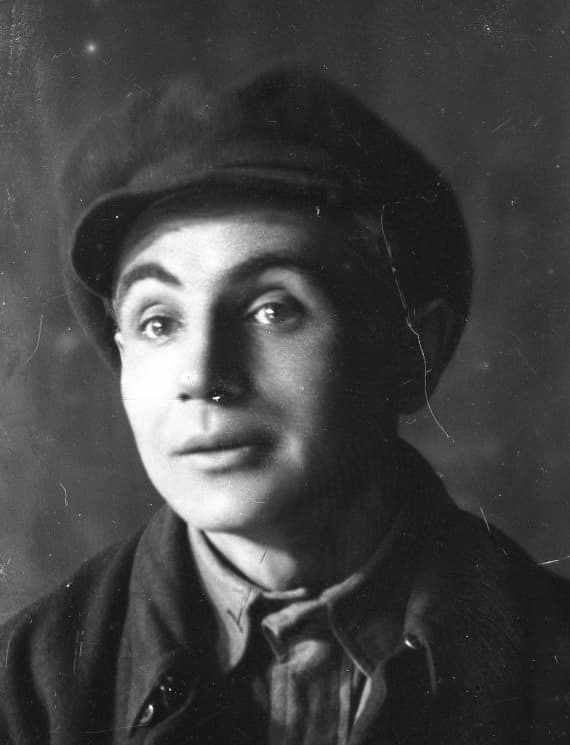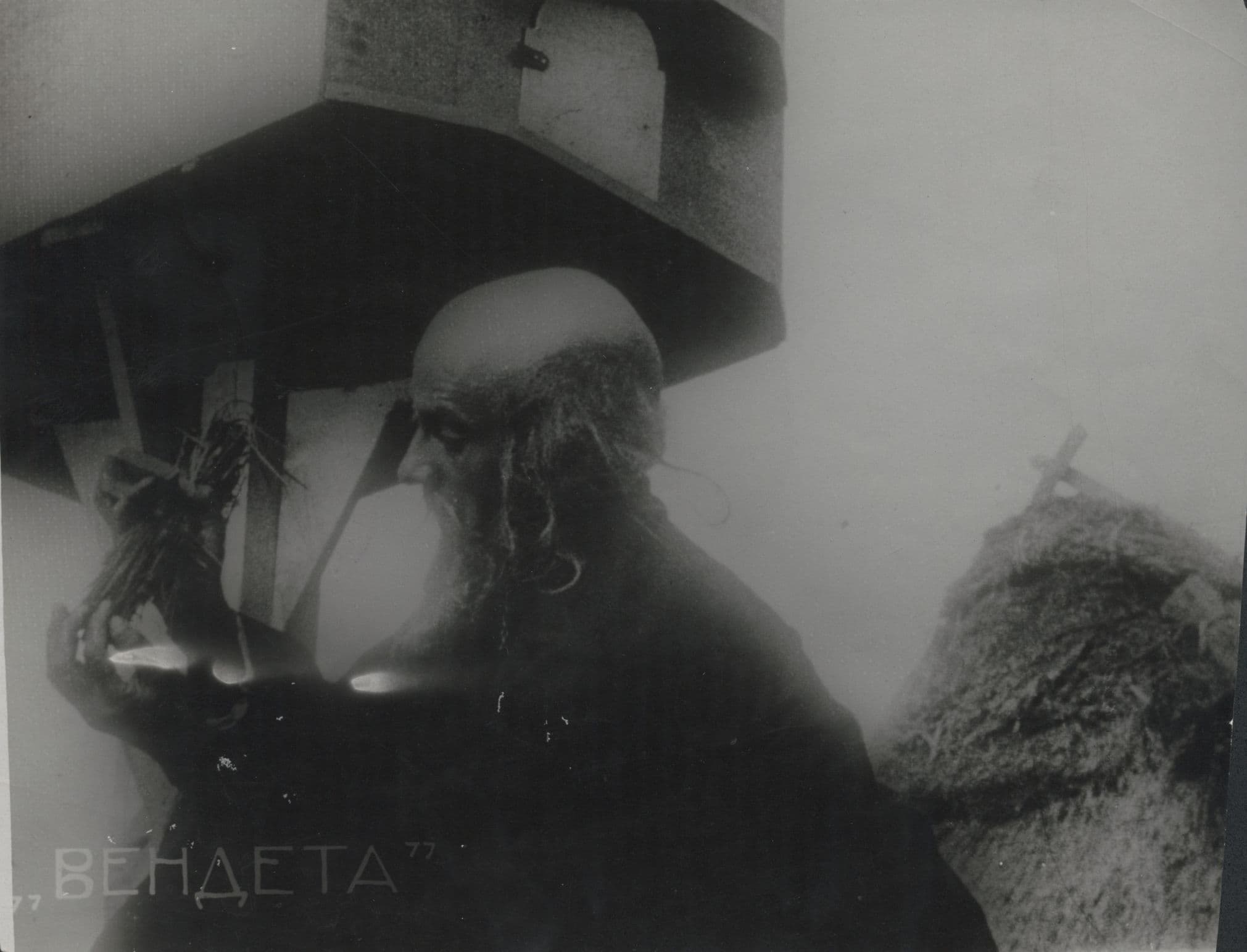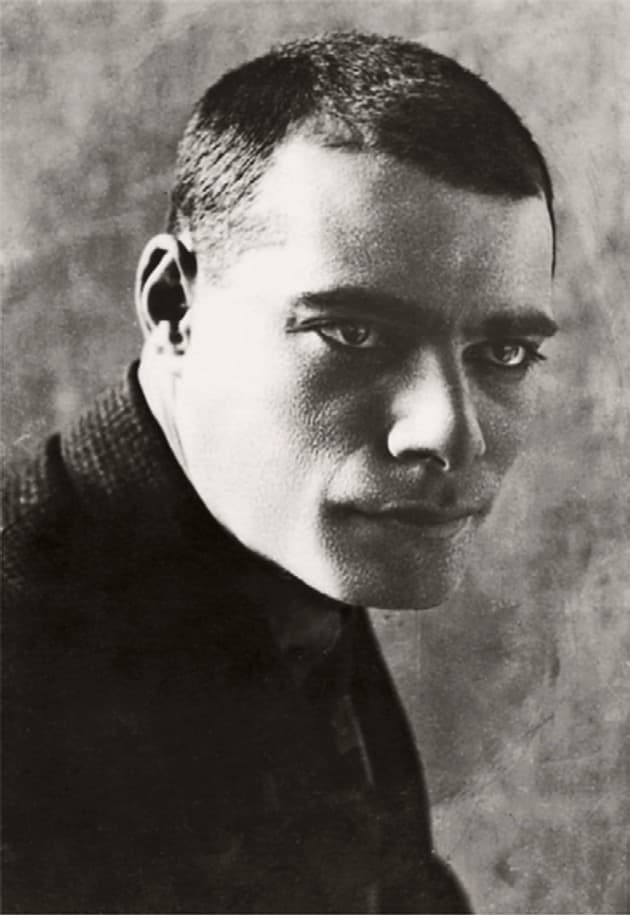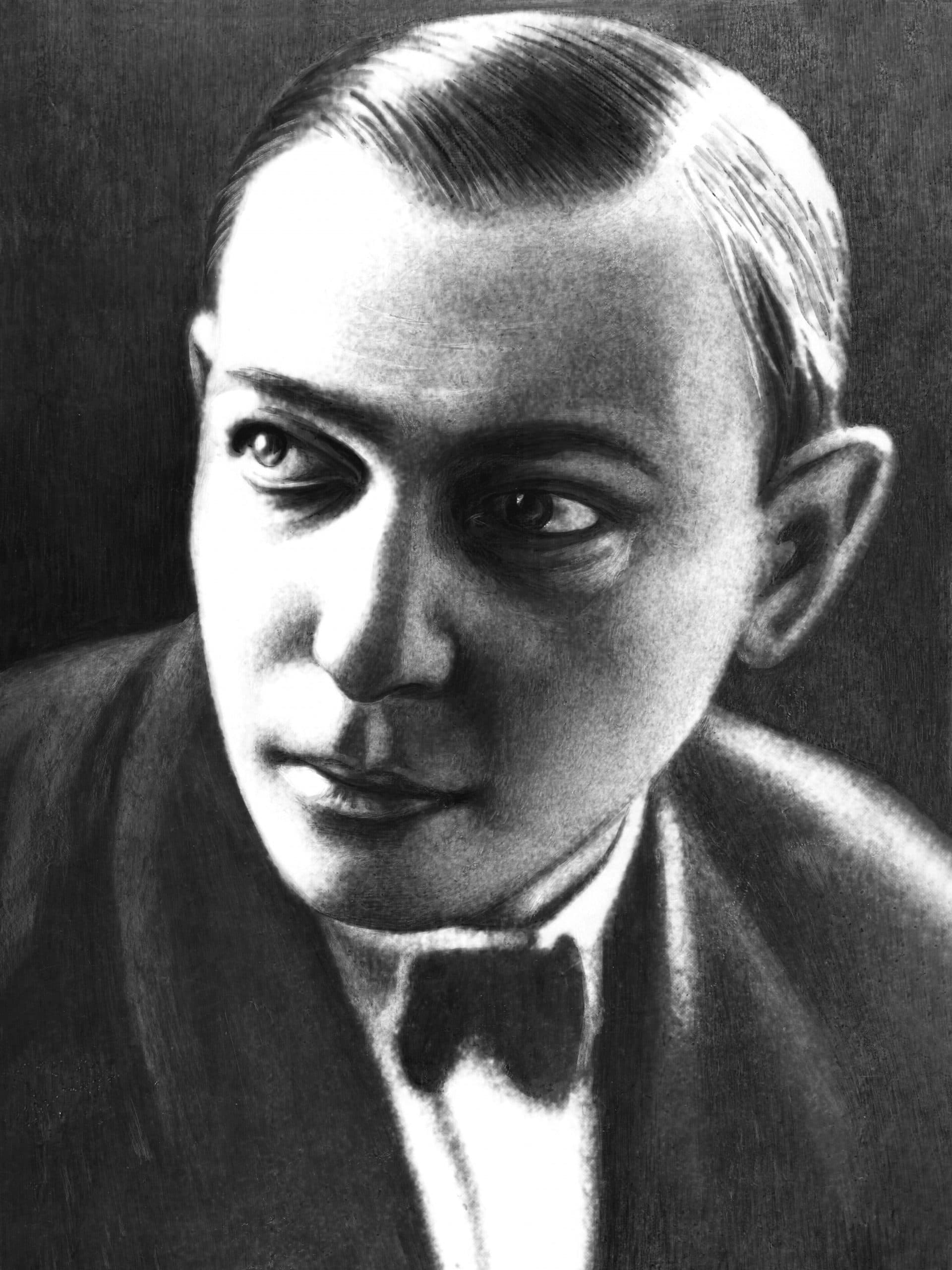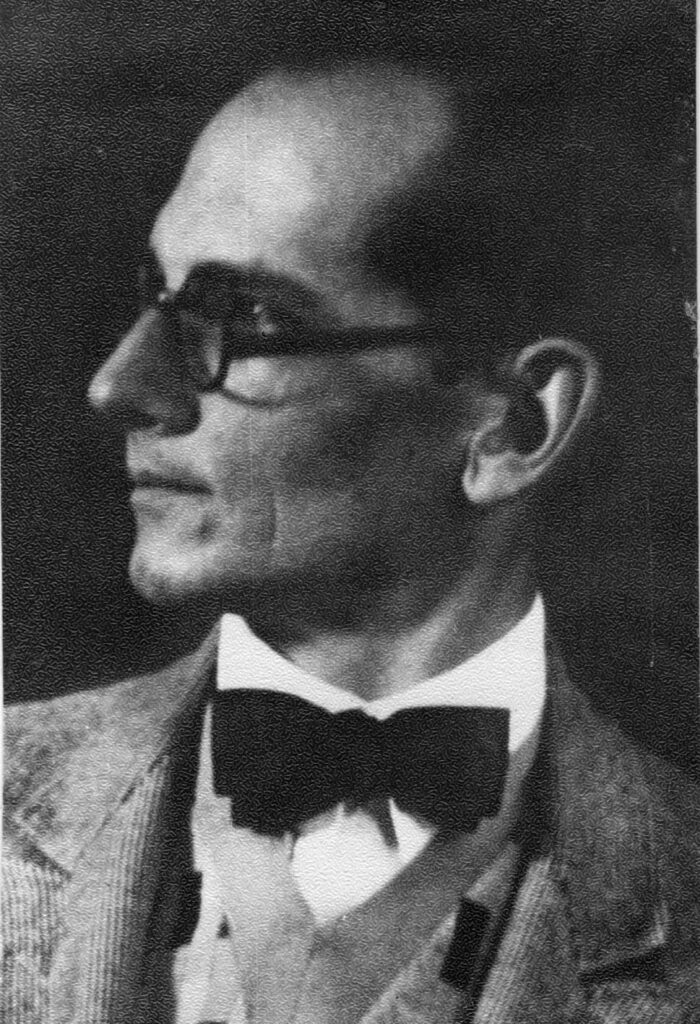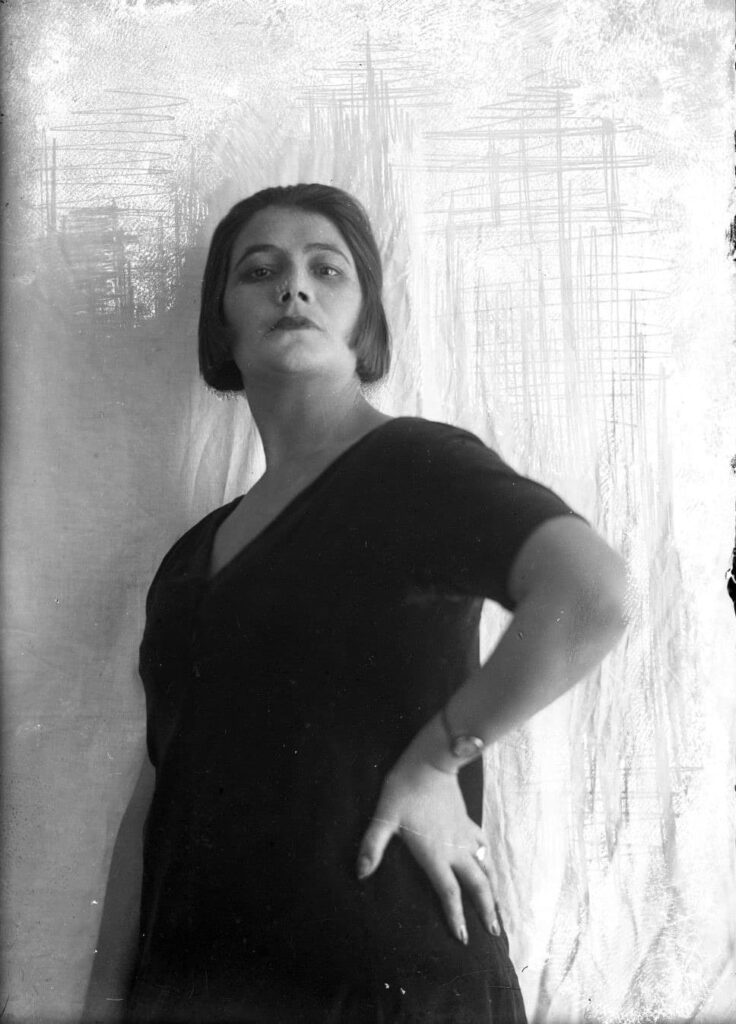Feature Film Vendetta
(An Eye for an Eye)
Comedy
924 m, VUFKU (Odesa), 1924, release date unknown
Scriptwriters: Mykola Borysov, Solomon Lazurin, Heorhii Stabovyi
Director: Les Kurbas
Cameraman: Boris Zavelev
Artist: Volodymyr Miuller
Assistant Director: Oleksandr Perehuda
Cast: Priest Silvestr Izhekheruvymskyi – Yosyp Hirniak, Priest’s Wife – A. Olenych-Alekseieva, Deacon Hordii Sviatoptytsyn – Stepan Shahaida, Deacon’s Wife – Nataliia Pylypenko, Night Watchman – Amvrosii Buchma, Old Woman – Hanna Babiivna
The success of Ukrainian cinema of the 1920s was preceded by the arrival in the film industry of strong personalities who continued to create Ukrainian culture. At the forefront of these artists was the innovative director Les Kurbas, who came to work at the Odesa Film Studio VUFKU for the second time in 1924. He came to make a Ukrainian film at a time when the Berezil Theater that he had “organized and nurtured was standing firmly on its feet,” his student Oleksandr Perehuda wrote in his memoirs (the manuscript is in the collection of the Museum of Theater, Music and Cinema of Ukraine). He returned to film when “the theater’s first performances of Georg Kaiser’s Gas, Kurbas’s staging of Upton Sinclair’s Jimmie Higgins, Shakespeare’s Macbeth, Shevchenko’s Haidamaky, and Ernst Toller’s The Machine Wreckers achieved fame and authority and proved their undeniable artistic value. Kurbas’s Berezil productions were a real holiday for fans of theatrical art. His shows were enthusiastically received by the grateful audience in Kyiv during the winter season,” and the audience in Kharkiv and Poltava during the May and June tours in 1924.
“The systematic and lasting development of Ukrainian cinema didn’t begin until 1924,” said Mykola Bazhan. “Production facilities were built, financial and material capacity was strengthened, Ukrainian society was more suited to the new cultural traditions of cinema art.”
Berezil actor Yosyp Hirniak wrote in his memoirs that while the theater was in Kharkiv, “the Commissariat for Education and the management of the Odesa Film Studio spent a lot of time trying to convince Les Kurbas to make several pictures with his actors.” They felt it was high time for this institution to start “Ukrainianizing.” After giving it much thought, Kurbas decided to add film to Berezil’s list of artistic interests and undertook to director three short film in four months: Vendetta, McDonald and Arsenaltsi.
According to Yosyp Hirniak, before inviting Kurbas to make films, the Kharkiv Commissariat for Education “came up with the idea to make a collection of short films (called Flywheel) that would be a kind of socialist newsreel.”
“The first shot was the script for the comedy Vendetta (An Eye for an Eye), about an argument and the irreconcilable hostility between a priest and deacon. The reason for the hostility was a cherry tree that grew between their homes. “It was believed,” said Perehuda, “that if a priest and deacon are arguing then the film is antireligious…”
The director of the Odesa Film Studio at the time, M. Kapchynskyi, strongly recommended it to Kurbas, because there weren’t any other screenplays. The director’s idea was simple: if the film bombs it won’t be a big deal and the risk is minimal because the budget is small. Few people at the time thought about creative plans or what the audience wanted. Les Kurbas agreed to make the film, so as not to sit idly,” said Perehuda.
Mykola Borysov, Solomon Lazurin and Heorhii Stabovyi co-wrote the script, Volodymyr Miuller was the artist, and Boris Zavelev was the cameraman.
Kurbas recruited student actors from the Berezil Artistic Association (mostly from Galicia) to star in the film: Yosyp Hirniak played Father Silvestr Izhekheruvymskyi, Stepan Shahaida was Deacon Hordii Sviatoptytsyn, Natalia Pylypenko was his wife, Amvrosii Buchma played the night watchman, Hanna Babiivna was the old woman, and A. Olenych-Alekseieva was the priest’s wife. They started filming Vendetta in June 1924 in Vinnytsia, “where the entire creative staff of the Odesa Film Studio VUFKU was filming the monumental two-part series Ukraaziia (which was being shot by P. Chardynin), the adventure film Forest Beast, and our small-scale film Vendetta,” recalled O. Perehuda. “Boris Zavelev was filming Chardynin’s Ukraaziia and our Vendetta in between.” What’s more, “they forgot to give us money for food and expenses. Tearful telegrams to the director remained unanswered. Somehow we survived… Finally, there came a dispatch from the director in Odesa! “There is no money, but you all hang in there! – Kapchynskyi.” The dispatch made the Berezil actors break out in laughter.” The actors never lost their sense of humor even in the most difficult circumstances.
At the time Les Kurbas was already well-respected in artistic circles. Oleksandr Perehuda observed that Kurbas wasn’t in the habit of sharing his plans – he kept everything to himself. “Good-looking and charming to a fault, he seemed to have a magical power over people, especially those he met through work. Even well-respected older actors didn’t dare object to his proposals.” On the other hand, “it was so difficult for him, he carried such a burden on his shoulders… There were delays, cancellations of shootings, hesitance,” because they had to “make a film based on a banal script in way so that at least one frame would sparkle with an original idea, poignant situation, unexpected plot twist, or unusual character behavior. It’s anti-religiousness was also questionable, its social significance didn’t go beyond ‘vaudeville wit,’ and the plot and setting themselves were very boring – it was not a funny comedy,” Perehuda concluded.
From the Annotated Catalogue of Soviet Feature Films of the All-Union State Film Fund (1961) we learn that the events in the film unfolded in the early 1920s. A small cherry tree grew on the border of the plots that the priest and deacon each inherited after the church lands in the village of Valiezhe were divided. After two years the tree was covered in juicy berries. Father Silvestr argued that the entire harvest belonged to him because of his angelic rank and pastoral seniority. Deacon Hordii insisted that it be split. The priest and deacon would quarrel and even fight whenever the cherry tree bore fruit, and they would be joined by the priest’s wife, the deacon’s wife and their many descendants. The comic situation was reminiscent of Ivan Nechui-Levytskyi’s novel Kaidash’s Family, where the characters argued and fought over a pear tree.
The management of the Odesa film studio decided to make a contribution to the anti-religious propaganda of the time by giving the plot an ideological spin. According to Yosyp Hirniak, “the management of VUFKU gave Kurbas a banal film for his debut and for some unknown reason he agreed to make it.” After all, the director wasn’t offered to make a film version of Upton Sinclair’s Jimmie Higgins or some other avant-garde Berezil production. He “had to find at least something to make Vendetta stand out from other films,” said Perehuda. “And Kurbas found it! He found a way to cinematographically express the social genesis of the characters’ ‘patronymic’ environment. He found the basis for their spiritual world. The comedy took on new meaning and significance. The director’s original approach gave meaning to the sterile literary material and saved a hopeless failed endeavor.” By making his changes to the film’s plot, Les Kurbas upheld his sense of responsibility towards the art of cinema, seriousness and respect for the Ukrainian film product in the new era of domestic silent film.
The director wanted the film to open with “a crowned hen sitting epically on a perch, as is fitting of every crowned person,” explained his assistant, Perehuda. “She is sitting still because she is performing her life’s function – hatching chicks. She wasn’t surprised, her peace wasn’t disturbed even when two eggs rolled out from under her… It’s a natural process! They rolled all the way down to the shells and chicks broke out of them. They broke and here we have….the PRIEST and the DEACON!” Ukrainian subtitles explain that such chicks were born to such a hen.
Les Kurbas used three-dimensional animation for the first time in the history of Ukrainian feature film and immediately determined the angle in which the film’s plot should develop, giving the picture an ideological and philosophical direction. “The director’s successful experiment in genre transformed a toothless, everyday nonsensical comedy into sharp satire.” It should be noted that cameraman Boris Zavelev had mixed feelings about Kurbas’s compositional innovations. Sometimes he reproached him for being disrespectful of the film camera, but in the end he gave in to his principles and shot it the way the unpredictable director wanted.
Kurbas handled the movie equipment very skillfully and confidently from the very first day of filming. The director’s assistant noticed something else about the artist on the set: “Working with L. Kurbas was always fun and pleasant, although at times difficult, especially for me, as his assistant. Les Kurbas didn’t draw up work plans for the next day. Everything always had to be ready: actors, props, costumes, decorations, lighting… brushes for cleaning shoes and clothes.”
Yosyp Hirniak recalled how the film director arranged the scenes: “We watched as he worked hard on the set. From time to time he would look through the camera lens at the frame until he had a flash of an original idea, poignant situation, unexpected plot twist, non-formulaic character play. He had to create dazzling comedic situations to justify the need for such a film – and he found them, so to speak, on the fly. The whole time he was testing, experimenting, checking certain ideas on us, on all the members of the film crew and on himself. He was very demanding of us, and most of all of himself.”
Oleksandr Perehuda described a funny moment during the filming of the fight between the priest and deacon over the cherry tree. “The priest (Yosyp Hirniak) was thin and skinny, but snaky and quick. The deacon (Stepan Shahaida) was a phlegmatic giant with a huge head of hair down to his eyebrows. The priest, obviously, wore a cross around his neck. This cross caused lots of problems for everyone because they would get tangled up in the chain while fighting. Kurbas came up with a way to use this in the film:
– They’re tangled up in the cross? Fantastic! Why don’t you try to hit Stiopa with the cross.
Hirniak hit Shahaida lightly.
– Yuzia, don’t tap him, hit him angrily… Action!
Shahaida squints his eyes in fear. Hirniak gets ready to hit him. Director’s orders – nothing you can do about it. The camera squeaks. Zavelev, fascinated by the dynamics of the action, shoots the tragicomic episode.
– Hit him!
Kurbas laughs like a happy child.
– ‘Les Stepanovych,’ interrupts his assistant, who was also responsible for safety, ‘Yuzko will smash Stepan’s forehead. What do we sacrifice – the film or his forehead?
– ‘Why?’ Kurbas asks in surprise, walks up, takes the cross and starts to hit himself in the forehead. It scrapes his forehead. He winces. – Yep… That’s too bad… It was such a great shot. We needed at least one more take just in case.”
Yosyp Hirniak remembers with great humor another interesting episode while filming in Vinnytsia in the summer, by the pond. “The weather turned bad: it got cold, the clouds covered the sun, and the action was in the water. According to the script, the deacon (Shahaida) had crept into the priest’s garden, picked several heads of young cabbage and threw them in the pond. The priest, examining the damage in his garden, sees the cabbages floating among the duckweed and water lilies in the pond. Without thinking, he takes off his clothes and jumps into the pond to fish out the heads of cabbage. Having thrown them ashore, he covers his sinful body with one cabbage and climbs out to shore, covered in duckweed. Suddenly the priest is hit by a cool wind. His teeth chatter from the cold. The assistant and costume designer dry him off with towels. Kurbas runs up and says: ‘Ay, ya, yay… Are you very cold? What should we do, what should we do? Is he dry? Yuza, come on, let’s try it again!’ But we had to wait until the crew threw fresh cabbages into the pond. And we did that for four more takes. Kurbas complained each time that I would catch a cold, that I would get sick from the damned cold. They would dry me off and he would give the orders:
– Come on, one more time!
From the shore you could hear his instructions:
– Turn to the right, there are still three heads of cabbage there, pick them up.
But that’s not all. On the shore, naked, frozen, covering myself with a cabbage, I had to look for my clothes, which the neighborhood boys hid while I was swimming with the cabbages.”
That’s the fun way the comedy Vendetta was made.
Having returned to Odesa from Vinnytsia, everyone was pleasantly surprised that the film crew was greeted very warmly. The staff recognized and smiled when Yosyp Hirniak walked around the studio with Stepan Shahaida and the management changed their attitude to the newcomer Les Kurbas after looking at the footage shot in Vinnytsia.
Boris Zavelev, the experienced and well-known Russian cameraman with whom Kurbas shot Vendetta, repeatedly praised his work on films. Zavelev was a well-respected master of classical cinematography with several dozen films under his belt and years of working with famous Russian directors such as Yevgeni Bauer. O. Perehuda recalled how “Boris Zavelev in moments of sincere admiration” for Les Kurbas’s creative work “shared his feelings with him, repeating: ‘This is the real Bauer!’ To what Les Stepanovych would reply: “Not Bauer – Kurbas!’”
In 1927 cameraman Boris Zavelev would help the young innovative director Oleksandr Dovzhenko make the first Ukrainian avant-garde epic film Zvenyhora in creative tandem with professor Vasyl Krychevskyi.
Kurbas proved at the film studio that he has the skills of creative expression through film and understands the aesthetic and artistic potential of cinema. His “students – actors at Berezil – worked on the set to the point of self-oblivion; after all, Berezil was a comprehensive school of theatrical art,” said Oleksandr Perehuda.
The film was part of the first issue of the VUFKU newsreel Flywheel.
The film is lost.
![Vendetta]()
Les Kurbas ![Vendetta]()
Solomon Lazurin co-screenwriter of the movie “Vendetta” ![Vendetta]()
Gorgiy Stabovyi co-screenwriter of the movie “Vendetta” ![Vendetta]()
Vladimir Mueller an artist ![Vendetta]()
Stepan Shagaida ![Vendetta]()
Hanna Babiivna
